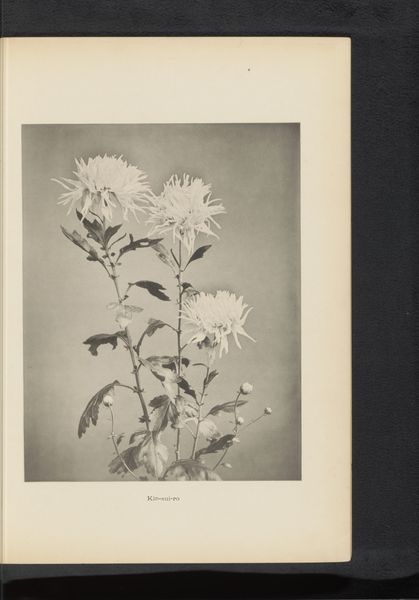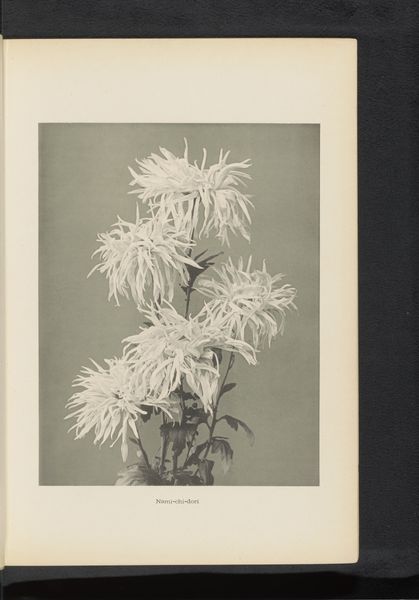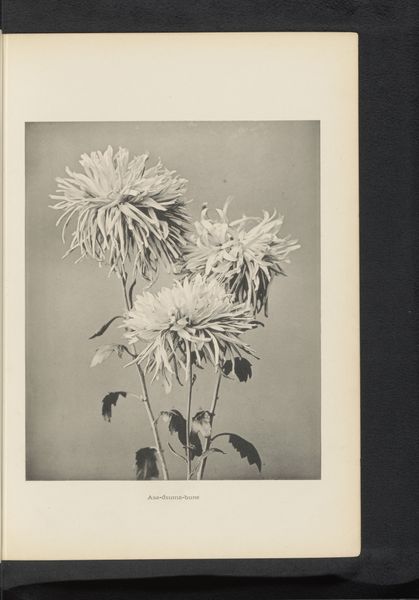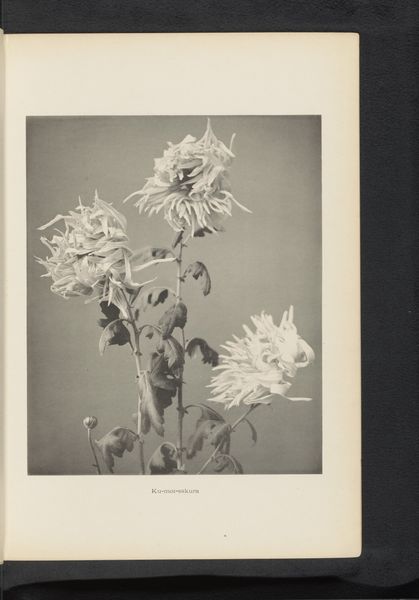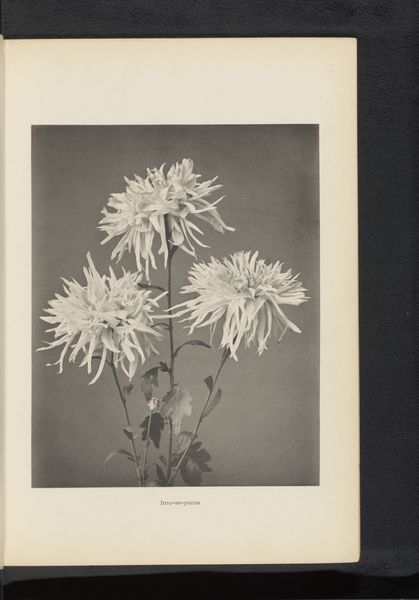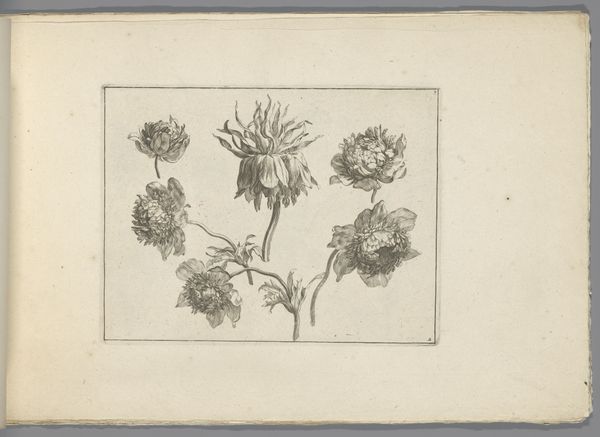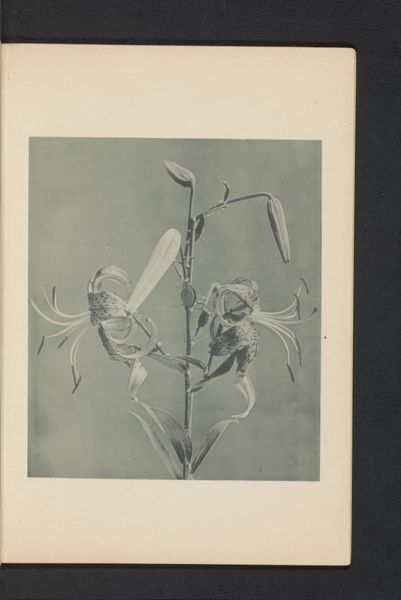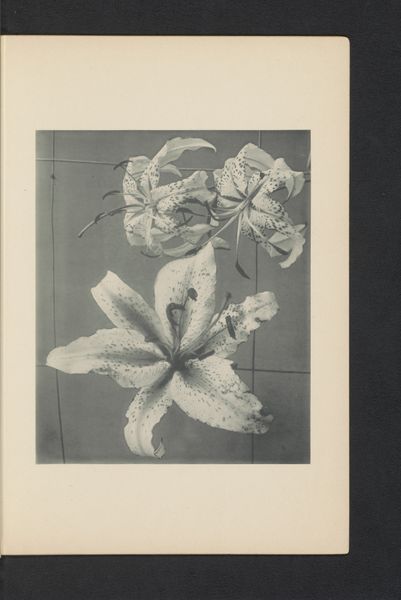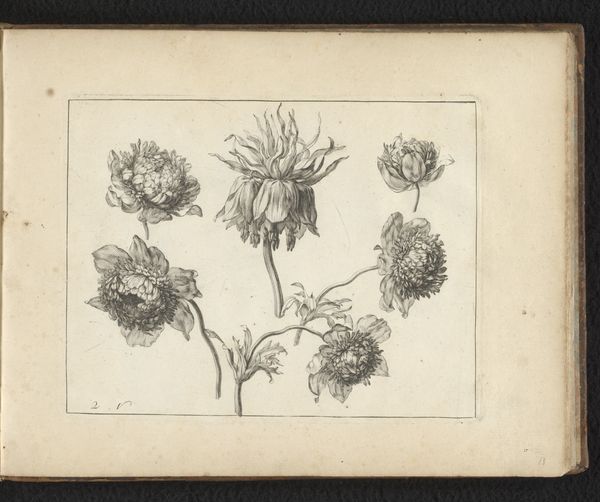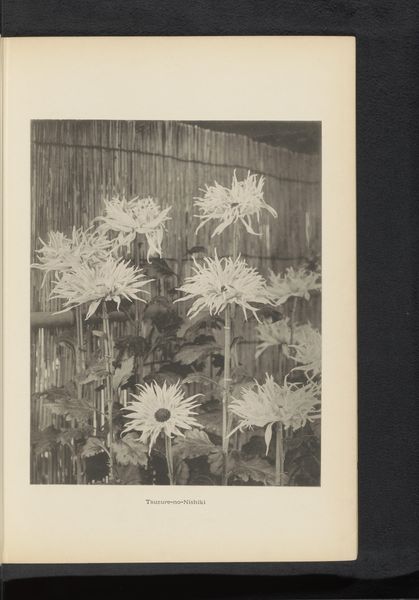
photography, gelatin-silver-print
#
still-life-photography
#
muted colour palette
#
white palette
#
paper texture
#
photography
#
gelatin-silver-print
Dimensions: height 274 mm, width 219 mm
Copyright: Rijks Museum: Open Domain
Kazumasa Ogawa created this photogravure of chrysanthemums, presented in a book, sometime between 1880 and 1890. The composition is carefully structured around the interplay of form and texture. The three large chrysanthemum blossoms dominate the visual field, their complex, radiating petals rendered in exquisite detail. The subdued monochromatic palette encourages a focus on the subtle gradations of light and shadow that define the flowers' shape. Note how Ogawa uses soft focus to convey a sense of ethereal beauty, highlighting the tactile quality of the petals. In this image, the chrysanthemum transcends mere botanical representation. Consider the historical context: the late 19th century in Japan was a time of rapid modernization and engagement with Western artistic styles. Ogawa’s approach, rooted in traditional Japanese aesthetics, captured the essence of a subject that had symbolic meaning to the Japanese culture. The chrysanthemum becomes a symbol of perfection, but it may also be interpreted as a metaphor for nature's ability to continuously reinvent itself.
Comments
No comments
Be the first to comment and join the conversation on the ultimate creative platform.
